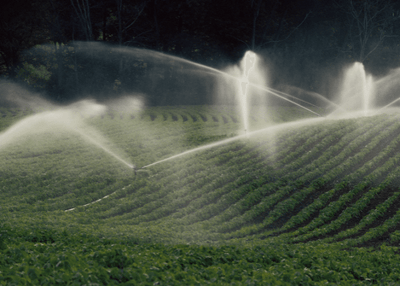Nitrates in Drinking Water
RSS
Analies Dyjak | Policy Nerd
Fertilizers, pesticides, and other types of stormwater runoff are common sources of drinking water contamination in the United States. Nitrogen is a major ingredient in agricultural and household fertilizers that are used to promote growth. Algal blooms occur when photosynthesis production spikes due to an influx of nutrients, which is frequently associated with nitrogen-based fertilizers. If you have ever seen a bright green body of water, it may have been because of nitrogen overloading. Municipal water systems typically have the proper technology to filter out nitrates, but the higher the concentration, the harder they are to filter. Groundwater wells are by far the most at risk for nitrate contamination. Private wells are not regulated and detection of nitrates or other contaminants is impossible without expensive testing.
Health Effects of Nitrates in Drinking Water
Nitrate contamination can result in methemoglobinemia or "baby blue" disease. This occurs when nitrate-contaminated tap water is used to prepare infant formula. This life-threatening disease reduces the blood’s ability to carry oxygen throughout the body. Nitrates are colorless and odorless, and thus difficult to detect. Nitrates in the environment do not pose a considerable health risk unless they’re ingested, in which case they are reduced to nitrites within the body. Nitrites are then further reduced to N-nitroso compounds which are known carcinogens and are also linked to other health problems. You may be familiar with this compound because it can be found in processed meats and vegetables that are high in vitamin E. Bladder and thyroid cancer, as well as birth defects are the primary health risks associated with nitrate contamination.
Non-Point Source Pollution
Nitrate contamination in water is associated with non-point source pollution from agriculture, residential lawn maintenance, and recreational field maintenance. Unlike point source pollution which originates from factories and other industrial sites, non-point source pollution is much more difficult to regulate. Point sources are regulated by National Pollution Discharge Elimination System (NPDES) permits which include allowable levels of pollution and best practices for managing contamination. Non-point pollution culminates from various different sources, some of which are unknown. This makes identifying “responsible parties” a very difficult task. Non-point sources are regulated through Water Quality Management Plans under Section 319 of the Clean Water Act. Water Quality Management Plans include Best Management Practices (BMP’s), implementation plans, and deadlines that must all be approved by the Environmental Protection Agency.
How are Nitrates Regulated?
The Environmental Protection Agency set a Maximum Contaminant Level of 10 parts per million, which is an enforceable standard that public water systems must comply with. As previously stated, public water supplies should be equipped to handle nitrate contamination, but this isn’t always the case. For example, a 2015 study completed in various communities in Iowa concluded that 11 public water sources exceeded federal limits. The study also concluded that 880 municipal water systems were considered to be “highly susceptible to becoming contaminated by nitrates and other pollutants.” If you live in an agricultural area, we recommend using a filtration system to reduce the risk of nitrate contamination in your water.
As always, we encourage you to take advantage of Hydroviv's "Help No Matter What" technical support policy, where we answer questions related to nitrates in drinking water and water filtration. Drop us a line at hello@hydroviv.com.
Other Articles We Think You Might Enjoy:Algal Blooms and Cyanotoxins
Raw Water is Bad!
Agricultural Runoff and Water Contamination




